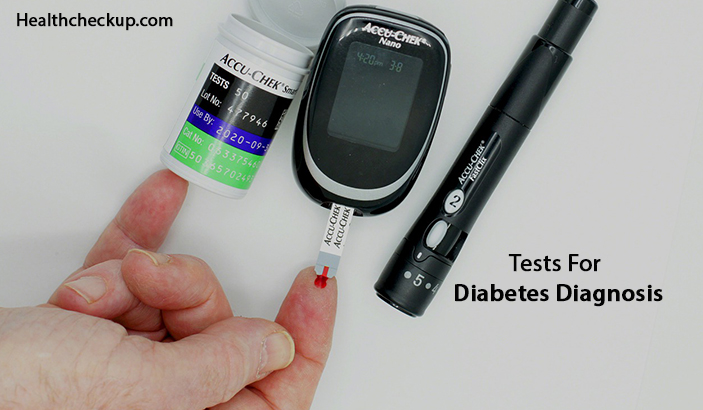The common types of diabetes include type 1 & type 2 diabetes and although both these need almost similar types of tests for diabetes diagnosis it is better to know a few guidelines before going for the test. Here are the American Diabetes Association (ADA) recommended screening tests and guiding principles for diagnosing diabetes.
Who Should Be Tested For Diabetes?
- A person with a body mass index above 25 (23 for Asian-Americans) not considering age should go for the test.
- People with risk factors that lead to diabetes such as sedentary lifestyle, high blood pressure, uneven cholesterol levels, and history of heart disease, polycystic ovary syndrome, and also close relation with diabetics.
- People higher than 45 years should also go for primary blood sugar screening.
- Women with a history of gestational diabetes.
- People diagnosed with prediabetes should also go for screening once a year.
Tests For Diabetes Diagnosis
The common diagnostic tests for type 1 and type 2 diabetes and prediabetes are as follows;
1. Glycated Hemoglobin (A1C) Test
This blood sugar test also called an hba1c test doesn’t need fasting and says about the average blood sugar levels for the last 2 or 3 months. It calculates the blood sugar percentage attached to hemoglobin.
The higher the blood sugar levels are the more sugar % is attached to the hemoglobin. An A1C level of 6.5% or above on 2 different tests indicates the presence of diabetes. An A1C between 5.7 and 6.4% means the presence of prediabetes. An A1C lower than 5.7 denotes normal.
In case the A1C test is not available, results are not steady or there are few conditions that lead to inaccuracy of the test like pregnancy or having an uncommon hemoglobin type, a doctor may rely on these tests.
2. Random Blood Sugar Test
A blood sample is collected randomly not taking into consideration your last meal. A sugar level of 11.1 millimoles per liter (mmol/L) or 200 milligrams per deciliter (mg/dL) or higher indicates diabetes.
3. Fasting Blood Sugar Test
Blood sample after overnight fasting is collected. A sugar level less than 100 mg/dL (5.6 mmol/L) is standard. A sugar level from 100 to 125 mg/dL (5.6 to 6.9 mmol/L) is prediabetes and a 126 mg/dL (7 mmol/L) or higher on 2 different tests indicates diabetes.
4. Oral Glucose Tolerance Test
After overnight fasting, blood sugar is measured followed by drinking sugar syrup. After having sugary syrup sugar levels are periodically tested for the following 2 hours.
Blood sugar level less than 140 mg/dL (7.8 mmol/L) is normal and more than 200 mg/dL (11.1 mmol/L) following 120 minutes is diabetes. A level between 7.8 mmol/L and 11.0 mmol/L (140 and 199 mg/dL) specifies prediabetes.
In case of type 1 diabetes is doubted, a urine test is done and an additional test may be done to check if there’re autoantibodies.
Tests For Gestational Diabetes
Gestational diabetes tests are suggested during pregnancy if you are at high risk of gestational diabetes or are at average risk of gestational diabetes.
Below Are The Screening Tests
1. Initial glucose challenge test
The test begins with consuming a syrupy glucose solution. After 1 hour a blood test will be conducted to know the level of blood sugar. A blood sugar level less than 140 mg/dL (7.8 mmol/L) is normally taken as normal on this type of test however, this could differ at specific labs or clinics.
If the blood sugar level is above normal it only indicates that there’s an augmented risk of gestational diabetes and a follow-up test is recommended by a doctor to decide if there is gestational diabetes.
2. Follow-up glucose tolerance test
For this test, a person will be on fasting overnight and then the fasting blood sugar level is measured. After the test is done on fasting, a sweet solution having higher glucose concentration is given to drink and the blood sugar level is checked every hour for 3 hours.
If a minimum of 2 of the blood sugar tests are higher than the normal out of the three tests it means you have gestational diabetes.
These are the tests for a diabetes diagnosis. As you age it is better to go for sugar tests as diabetes chances increase with age.

Sudheendra is a passionate blogger for 8 years and holds a Degree in Journalism & Mass Communications. His writings particularly focus on health, medicine, diet & lifestyle. For him, everything that interlinks and relates to health & medical world entices him. His write-ups aim at educating people not by just giving facts but by infusing human touch.








